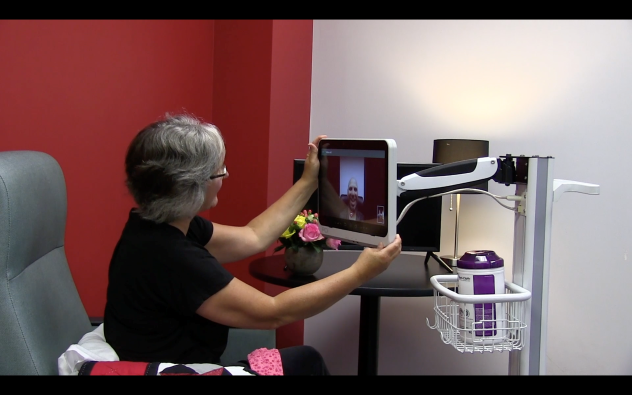Be the Hero in Your Patient Experience
Do you want your patients to have the best experience possible at your unique healthcare facility or hospital space? Choose interactive patient TV...
2 min read
Kayleigh DeLaet
:
February 14, 2024

Achieving a balance between delivering an exceptional patient experience and managing budget constraints is an ongoing challenge in the healthcare industry. With decreasing revenue and rising costs, satisfying both patients and stakeholders has become more demanding than ever.
To meet the growing expectations of healthcare consumers, facilities must invest in programs that not only align with patient preferences but also prove mutually beneficial by retaining existing patients and attracting new ones. With patients having more options than ever, facilities must go the extra mile to position themselves as top choices for care, earning recommendations and setting themselves apart from competitors.
An article by Medical Economics highlights that 69% of patients would consider switching to another provider that offers more appealing services. Hospitals are increasingly drawing inspiration from industries like hospitality to transform dissatisfied customers into loyal ones and enhance HCAHPS scores.
Below, we explore three practical and cost-effective ways to deliver an enhanced patient experience.

Communication is a critical aspect where healthcare facilities often fall short in patient satisfaction surveys. Whether it's explaining medical information in a way that’s easy to understand or keeping patients and their families informed about changes to treatment plans or medications, effective communication is key.
The Cleveland Clinic has successfully tackled this issue by implementing daily plan-of-care bedside visits with doctors, nurses, and other staff involved in care. This dedicated time allows for addressing questions and concerns while actively seeking ways to meet the patient’s and family’s needs. Dr. Leslie Jurecko, Chief Safety, Quality, and Patient-Experience Officer at Cleveland Clinic notes that these visits have proven to be the most impactful initiative in improving the patient experience.
Not only do they incur no additional expenses, but by implementing this program the facility now receives higher ratings for teamwork and communication, making patients more likely to recommend the facility to others.
When patients actively participate in their healthcare visits, it significantly enhances their overall experience and perception of the facility. Patient engagement software plays a key role in delivering meaningful content and applications, offering features such as access to health portals, TV streaming services, meal ordering, and patient education. These tools empower patients, keeping them both informed and entertained.
As technology progresses and expectations change, 79% of Americans want the ability to use technology when managing their healthcare experiences. Patients today are "shopping" for healthcare services, comparing facilities based on quality and convenience to get the most value for their investment.
However, one of the primary concerns surrounding patient engagement systems is hefty subscription and maintenance fees. GENiO, a content management platform by PDi, is a cost-effective option for interactive patient TVs. Because GENiO uses cloud-based technology, facilities incur no on-site concierge staff or ADT expenses. GENiO can also push messages and surveys to patients, saving staff a lot of valuable time and gathering real-time feedback to make swift, responsive adjustments.
The emergence of Telehealth, especially post-pandemic, presents a promising avenue for expanding the reach and efficiency of medical services. With fewer in-office visits, Telehealth reduces overhead costs, saving both time and resources for healthcare facilities. Moreover, Telehealth promotes efficiency, with virtual visits often being shorter than traditional in-office appointments, allowing providers the opportunity to chart during sessions.
Telehealth also proves beneficial in capturing patients who might not seek medical treatment otherwise. As noted by SCP Health, it can serve as a valuable resource for post-acute care, addressing the needs of patients who don't require hospital admission but still need assistance. It can also be used to continue a relationship with post-acute care patients discharged from the hospital and help support the recovery process.
.jpeg?width=1000&height=667&name=AdobeStock_469445082%20(1).jpeg)
Delivering an enhanced patient experience within budget constraints is possible through targeted strategies. By adopting these cost-effective approaches, healthcare providers can navigate the evolving landscape, meet patient expectations, and maintain a competitive edge.

Do you want your patients to have the best experience possible at your unique healthcare facility or hospital space? Choose interactive patient TV...

Healthcare providers know how important a safe, great experience is for patients and their overall satisfaction. Providers are often looking for new...

Data is invaluable in healthcare, providing vital information for decision-making. Patient engagement metrics measure how well a facility connects...